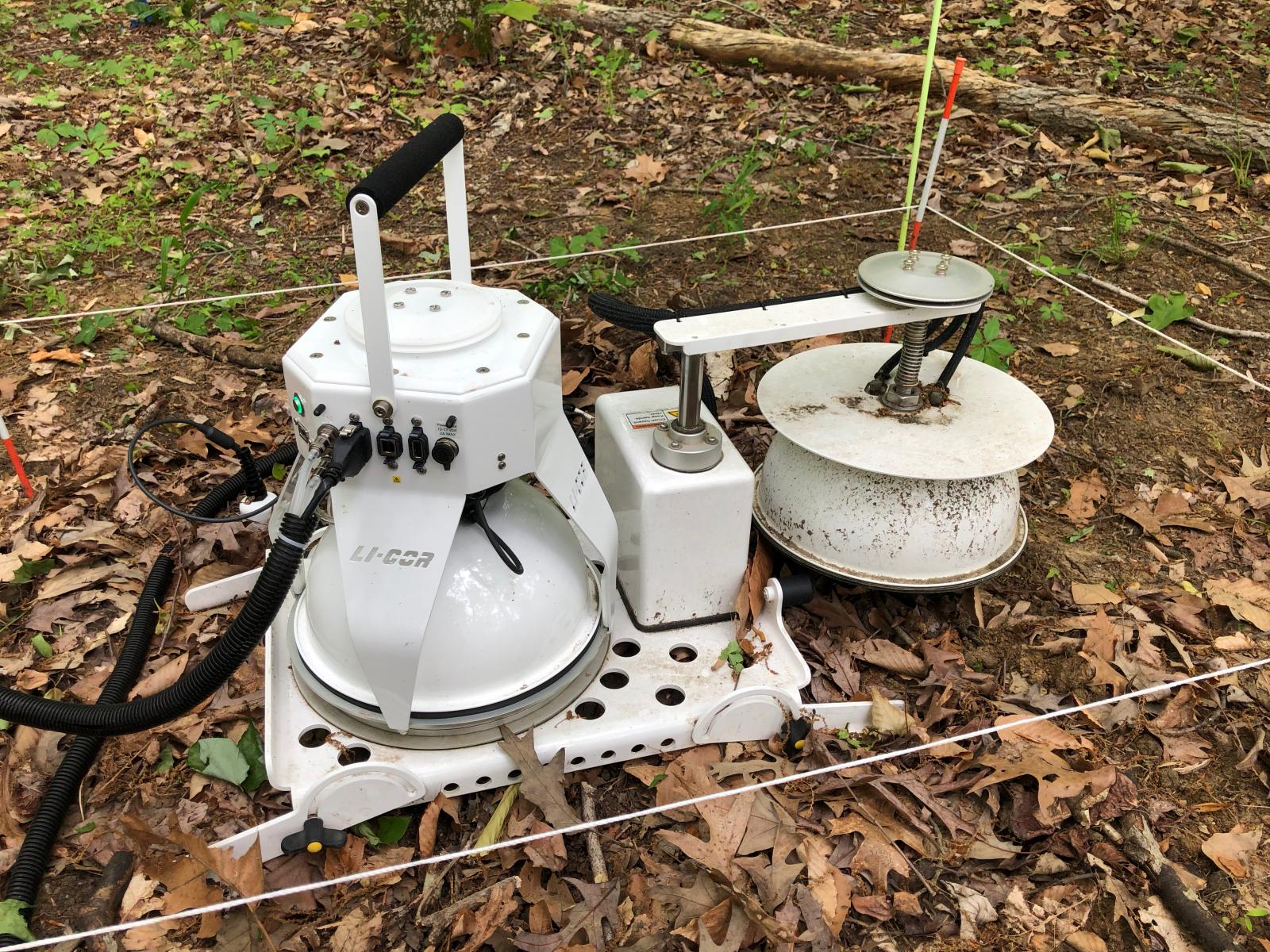Leveraging a Global Soil Respiration Database to Improve Field Measurements
Variability in field measurement approaches likely does not impact estimates of a key carbon cycle flux

New research validates the robustness of the current scientific understanding of how much carbon flows from the soil to the atmosphere despite the many different measurement approaches used by scientists worldwide.
(Image courtesy of Benjamin Bond-Lamberty | Pacific Northwest National Laboratory)
The Science
Biogeochemists and ecologists widely measure soil respiration, the flow of carbon dioxide (CO2) from the soil to the atmosphere generated by both plant roots and microbes, and one of the largest fluxes of carbon in the Earth system. Researchers make these measurements under very different conditions (different instruments, methods, times of day, etc.) with a limited understanding of how these differences affect the subsequent calculations of soil respiration fluxes. As any biases would propagate up to global carbon flux estimates, researchers used a database of flux measurements and found no significant biases in the final data.
The Impact
This study is the first to leverage a global database of flux estimates and measurement conditions to assess potential biases in flux data induced by different measurement techniques. This work tested data obtained via a range of techniques, with none of the factors explored imparting a large bias to the subsequent flux estimates. This means that the current understanding of how much carbon flows from the soil to the atmosphere every year is likely robust and not unduly skewed by the many different approaches used by scientists worldwide.
Summary
Soil‐to‐atmosphere CO2 is the second largest component of the terrestrial carbon cycle and researchers’ ability to balance the terrestrial carbon budget and forecast climate change relies upon accurate measurements of this process. Researchers commonly use collars permanently installed in the soil to measure soil‐to‐atmosphere CO2. However, differences in collar properties, measurement duration, and measurement frequency could lead to biases in the estimation of the amount of annual soil‐to‐atmosphere CO2. While many methodological studies for measuring soil‐to‐atmosphere CO2 exist, there have been no comprehensive evaluations of the influence of collar properties and measurement duration on annual soil‐to‐atmosphere CO2 variability. This study used a global data set to analyze soil‐to‐atmosphere CO2 measurements to look for biases related to collar properties and measurement duration. The annual amount of soil‐to‐atmosphere CO2 negatively correlated with collar height and insertion depth, but showed no significant relationship to measurement duration and measurement frequency. Overall, the analysis showed no significant bias based on collar properties and measurement duration. These results provide strong support for compiling site‐scale soil‐to‐atmosphere CO2 measurements to support synthesis analyses, global soil‐to‐atmosphere CO2 modeling, and global soil‐to‐atmosphere CO2 benchmarking.
PNNL Contact
Vanessa Bailey, Pacific Northwest National Laboratory, Vanessa.Bailey@pnnl.gov
Funding
This research was supported by the U.S. Department of Energy, Office of Science, Biological and Environmental Research program as part of the Terrestrial Ecosystem Sciences Program. The Pacific Northwest National Laboratory is operated for DOE by Battelle Memorial Institute.
Published: February 17, 2021
J. Jian, C. Gough, D. Sihi, A. Hopple, and B. Bond-Lamberty. “Collar Properties and Measurement Time Confer Minimal Bias Overall on Annual Soil Respiration Estimates in a Global Database,” Journal of Geophysical Research-Biogeosciences, in press. (2021). DOI: 10.1029/2020JG006066